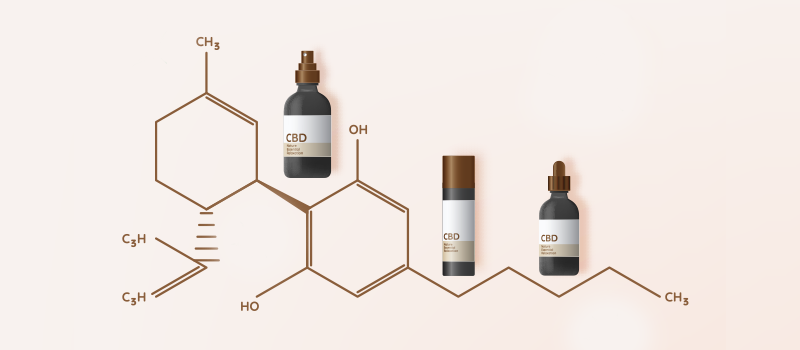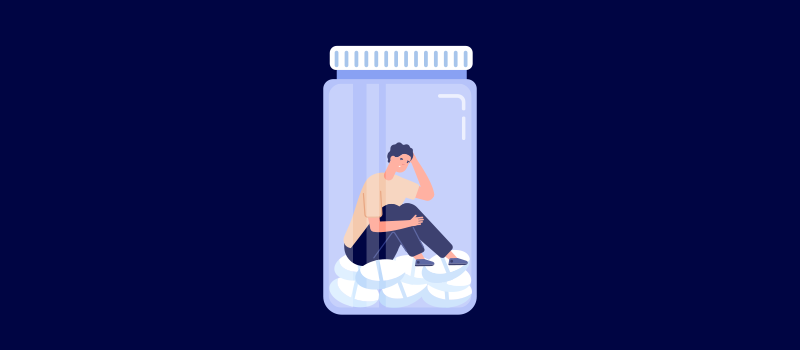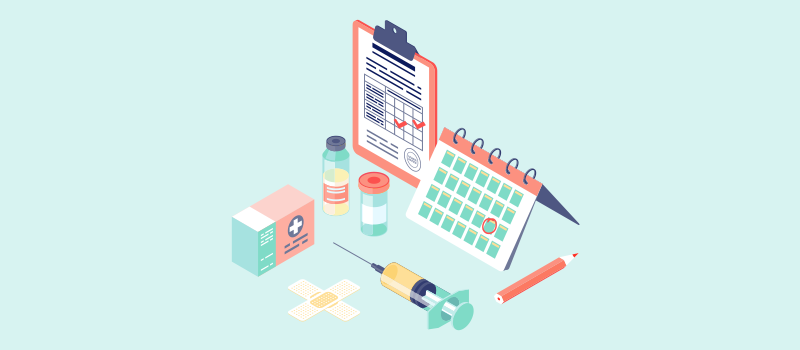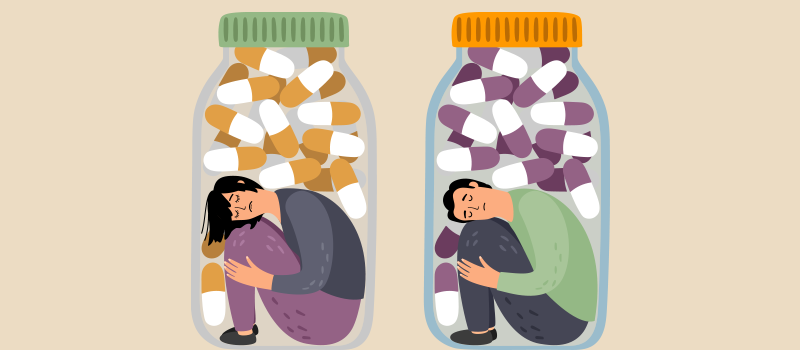What’s the Buzz
The Bee Healthy Blog
How Much Aleve (Naproxen) Can I Take Safely?

Aleve is a nonsteroidal anti-inflammatory drug commonly used to treat aches and pains, fevers, and inflammation. It is available both over-the-counter (OTC) and by prescription.
Please continue reading to learn more about safe Aleve dosage, side effects, warnings, and the precautions you should take while using this medicine and other anti-inflammatory drugs.
What are nonsteroidal anti-inflammatory drugs?
Nonsteroidal anti-inflammatory drugs (NSAIDs) (pronounced en-saids) are medications that are widely used to treat conditions like pain, stiffness, swelling, inflammation, and fever. Examples include aspirin, ibuprofen (Advil), naproxen (Aleve, Anaprox, Naprosyn, Naprelan), diclofenac (Voltaren), indomethacin (Indocin), and others.
NSAIDs also prevent blood clots from forming. This is useful in some cases, but it can also cause problems. For example, aspirin can protect against heart disease by preventing blood from clotting. On the other hand, NSAIDs can increase the risk of bleeding. They can even cause serious problems like ulcers, stomach bleeding, and intestinal bleeding.
What is Aleve (naproxen sodium) used to treat?
Aleve is used to treat rheumatoid arthritis, osteoarthritis, juvenile arthritis, ankylosing spondylitis, bursitis, tendonitis, gout attacks, strains, sprains, muscle aches, headache, menstrual cramps, dental pain, and fever.
Naproxen (the active ingredient in Aleve) is also available in combination products. For example, Aleve PM is a sleep aid that contains naproxen and diphenhydramine to treat minor aches and pains and insomnia, and Treximet contains naproxen and sumatriptan to treat headaches.
What are the common side effects of Aleve?
The most common side effects of Aleve (naproxen sodium) include stomach pain, nausea, constipation, diarrhea, heartburn, dizziness, drowsiness, itchy skin, and tinnitus (ringing in the ears). Taking Aleve with food or a full glass of water can help to reduce or avoid gastrointestinal side effects.
Aleve and other NSAIDs can also cause dangerous side effects such as an allergic reaction, shortness of breath, chest pain, pain radiating to your arm, neck, or jaw (this can be a sign of a heart attack), severe stomach pain, yellowing of the skin or eyes, dark-colored stools, and blood in the stool or vomit. You should contact your doctor immediately or seek emergency medical care if you experience these potential side effects.
While Aleve is available over-the-counter, it is important to consult a healthcare professional before taking OTC medications for longer than a few days. This is because there can be dangerous drug interactions between a nonprescription NSAID like Aleve and some of your other medications.
What Aleve doses are available?
Aleve (naproxen sodium) tablets are available in the following dosage forms: An over-the-counter (OTC) dose of 220 mg and prescription-strength doses of 250 mg, 275 mg, 375 mg, 500 mg, and 550 mg. There is also a delayed-release tablet (375 mg and 500 mg), an extended-release tablet (375 mg, 500 mg, and 750 mg), a capsule (220 mg), and an oral suspension (25 mg/mL).
What is the correct Aleve dosage to relieve pain?
Aleve is approved for use in adults and children over 12 years. As with other NSAIDs, the aim should be to take Aleve at the lowest effective dose for the shortest duration possible.
OTC Aleve Dosing
- 1 tablet (220 mg) 2-3 times a day (every 8-12 hours) as needed. The maximum dose is 3 tablets (660 mg) in 24 hours.
Prescription Naproxen Dosing
- Pain (tendonitis, bursitis, menstrual cramps): 550 mg for the first dose, followed by 250 mg every 6-8 hours or 500 mg every 12 hours. The maximum dose is 1,250 mg on the first day and 1,000 mg in a 24-hour period on subsequent days.
- Pain (rheumatoid arthritis, osteoarthritis, ankylosing spondylitis): 500 mg to 1,000 mg per day in divided doses (every 12 hours) or extended-release 750 mg to 1,000 mg once a day.
- Acute gout: 750 mg initially, followed by 250 mg every 8 hours (3 times a day) until symptoms go away or 1,500 mg extended-release tablet on day 1, followed by 1,000 mg extended-release per day until the acute gout attack subsides.
Missed Dose
If you are on a regular dosing schedule of Aleve and miss a dose, take it as soon as you remember and then take the next dose after 6-8 hours or 12 hours as scheduled. Never double up on Aleve doses.
How much Aleve can you take safely?
As mentioned, you should take the smallest effective dose of Aleve for the shortest possible time. The maximum daily dose of Aleve for adults is 660 mg of the OTC preparation. You can take 2 tablets in the first hour for your first dose. After that, you should not exceed 2 tablets in 12 hours or 3 tablets in 24 hours. Do not take OTC Aleve for more than 3 days for fever or more than 10 days for pain unless your doctor tells you to.
If your doctors prescribe naproxen (Aleve) or any other NSAID, do not take more of the medicine, do not take it more often, and do not take it for longer than advised by your physicians.
What is the dose of Aleve in children under 12?
Aleve is not generally given to children younger than 12 years of age. It may be used in some children under a doctor’s advice and supervision. The dose will depend on your child’s weight in this case.
What are some of the warnings for Aleve?
Heart Attack and Stroke
Nonsteroidal anti-inflammatory drugs (NSAIDs) like Aleve (naproxen sodium) can increase your risk of heart attack or stroke (low-dose aspirin is excluded from this risk and is actually protective). The risk may be higher in people on long-term treatment with NSAIDs. Talk to your doctor about the safety of taking Aleve or other NSAIDs if you have recently had a heart attack, or you have heart disease, high blood pressure, high cholesterol, diabetes, or if you are a smoker. Seek emergency medical care if you experience symptoms like shortness of breath, chest pain, slurred speech, or weakness on one side of the body.
Bleeding Risk
Taking naproxen sodium (Aleve) and other drugs in the NSAID category can cause ulcers, stomach bleeding, and intestinal bleeding. People with long-term NSAID use or NSAID use at higher doses, older individuals, and those with heavy alcohol use (more than 3 drinks/day) are at higher risk. Stop taking Aleve (naproxen sodium) and call your doctor if you experience symptoms like heartburn, stomach pain, blood in your vomit, vomit that looks like coffee grounds, blood in your stool, or dark-colored stools.
References:












SOCIAL